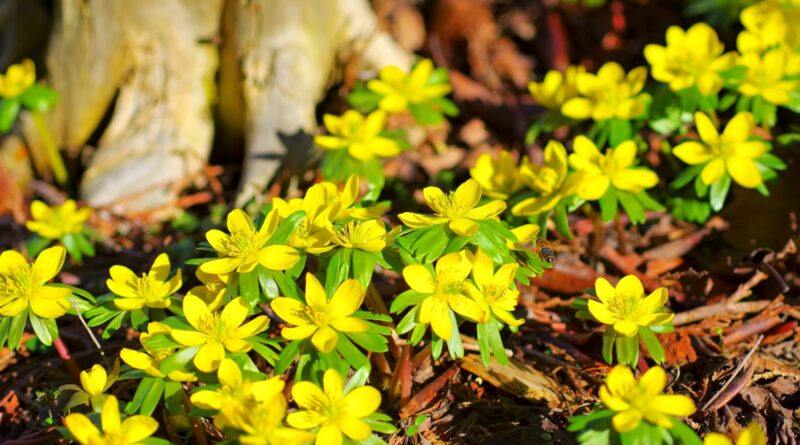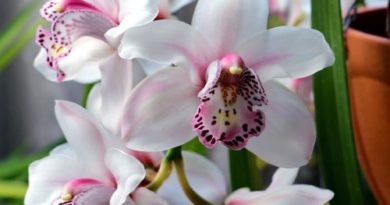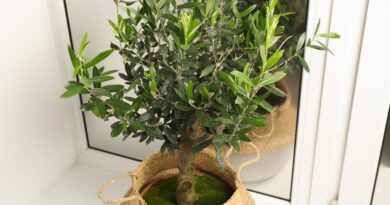How to Plant, Grow, and Care for Winter Aconite
Winter can be a long and tough period for gardeners. When most of your plants have died down, and there is little life outdoors, a pop of color is the one thing we need to lift our spirits and get excited for spring. You can’t go wrong with winter aconite to brighten your winter garden.
Part of the buttercup family, winter aconite sports adorable yellow buttercup flowers in the late weeks of winter. They are often the first flowers to emerge, instantly drawing attention with their sunny color.
Bloom time is not the only benefit of these plants. They are also incredibly resilient and low-maintenance, requiring little attention after planting.
Plant Overview

|
|
|
|
What Is It?

Winter aconite, scientifically Eranthis hyemalis, is one of the first signs of spring in a late winter garden. The scientific name hints at this flowering time, with Er referring to spring and anthis to early flowering. The specific epithet also adds to the description, meaning winter blooming.
As part of the buttercup family, the classic yellow cup-shaped flowers are the highlight of the season. They emerge first, highlighted by an adorable crown of green bracts. Once the flowers die back about two weeks after opening, the green leaves emerge to add ornamental interest until summer.
This species is native to the woodlands in Europe. Like other compact woodland plants, it typically grows under the canopy of taller forest trees in dappled shade. Early flowering allows it to develop before the overhead trees form their full leaf canopy – something to consider when deciding on a planting location.
This cute plant is wonderfully compact, growing to a maximum height of around six inches. It can be squeezed into gaps in beds or rock gardens but makes the most impact when planted in larger groups. Alternatively, you can plant and leave a few to spread and fill gaps naturally.
Characteristics

Growing from tubers, winter aconite keeps low to the ground. The bright flowers appear before any foliage, which only emerges once the flower has died back. There is still some greenery at flowering time as bright green bracts highlighting the central flower.
Although often overlooked, this plant can be incredibly useful in the garden. They are ideal for empty areas under deciduous trees where other plants may struggle to grow, adding a pop of color that signals the coming of the spring season.
They are also great plants for those in colder climates, tolerating temperatures down to a chilly 5F. If you live in USDA zones 3-7, you can enjoy these sunny yellow flowers year after year.
They pair well with other early spring plants like crocuses and snowdrops. They look just as good planted en masse if you want a carpet of yellow color. However, they can spread quite vigorously and must be monitored if you want them to stay in a specific area.
Planting

Winter aconite is best planted in late summer or early fall before the soil hardens. Getting them in the ground before winter hits is essential, as they need weeks of exposure to the cold to trigger blooming in late winter.
These plants are resilient and will grow well in many locations in your garden. But, if you want to replicate their native conditions for strong flowering and quick growth, plant in the soil under your deciduous trees. This will give them the sunlight required to flower in late winter, shaded from the intense sun of later spring by the tree leaves.
They aren’t too fussy about soil. The only serious requirement is that it drains well. A rich loam with a slightly alkaline pH will best match native conditions, but the tubers can easily adapt to different soil types if given the time.
Plant the tubers around two inches deep. If they look shriveled or dehydrated, soak them in water for a few hours before you start. Since you’ll probably be planting more than one at a time, space them around four inches apart. When planting en masse, rows close together can look unnatural in the first year, so I recommend randomly spreading the tubers and planting them where they land.
After planting, water the area thoroughly. The tubers will remain underground throughout winter, requiring no additional attention while they become established.
How to Grow
Once you’ve planted, most of the hard work of growing these plants is done. They are incredibly low-maintenance and typically perform best when left alone.
Light

Winter aconite can adapt to many lighting conditions, from partial shade to full sun. In its natural woodland habitat, it grows in dappled sunlight underneath the bare branches of trees in winter and early spring. It receives more and more shade over spring, and the leaves of trees start to grow in.
If you have the ideal spot, replicating these conditions will deliver the best growth. However, in moderate climates, you can also keep them in partial shade or full sun. Avoid deep shade, as the lack of light may hinder flowering in spring. Avoiding intense direct sun, especially in warmer climates, is also best. Around five hours of direct sun per day is ideal.
Water

After planting, the soil should be kept consistently moist but not soggy to allow the plant to establish well. Soggy conditions can cause the tuber to rot over winter, limiting any chance of flowering before spring.
Once established, they can be watered along with the rest of your garden and won’t need additional attention. The only thing to watch out for is waterlogging, especially after periods of heavy rain. If you notice any pooling around the area, it’s best to improve drainage in the soil or relocate the tubers before they rot.
Once the plant starts to die back in summer, you can reduce watering around the plants. They prefer dry soil over the warmer months when little growth occurs. During periods of drought, light watering can prevent them from shriveling, but they generally won’t require much additional watering.
Soil

Adding to its adaptability, winter aconite can grow in most soil types except for heavy clay. Like most plants, it thrives in soil that drains well and has plenty of organic matter. But if your soil conditions are imperfect, you don’t need to worry that the plants won’t grow.
Good soil structure is the most important characteristic to watch to avoid tuber rot. If the soil in your garden is heavy clay or holds onto too much moisture, you’ll need to amend it before planting to boost drainage. Similarly, avoid very sandy soil that doesn’t hold onto any moisture, preventing root growth.
The ideal pH for these plants is neutral to alkaline, but they are not fussy. They should be happy if the soil is not highly acidic.
Temperature and Humidity

Best grown in cooler climates, winter aconite is happiest in USDA zones 3-7. It tolerates cold well, needing it to trigger flowering once temperatures increase. Blankets of snow don’t worry the dormant tubers, although they will benefit from some protection if temperatures drop below 5F.
Humidity is not a major concern for these plants, but fungal issues may be more common in high-humidity areas. If summers in your region are excessively dry and warm, choose a slightly shadier spot for planting and keep up with watering to stop the tubers from drying out.
Fertilizing

Winter aconite generally does not require extra fertilization if planted in the right soil rich in organic matter. A light application of slow-release fertilizer at planting time can support growth and flowering later on if the soil lacks nutrients.
Maintaining soil health by mulching with organic matter is usually enough to keep these plants happy.
Maintenance

Winter aconite maintenance largely involves leaving the plant alone. After the blooming period, allowing the foliage to die back rather than trimming it is important. This helps the plant to store energy in the tubers for the next growing season.
One aspect of maintenance you may need to consider is controlling spread. To keep it contained, you can dig up and divide the tubers. If not, leave them to spread independently and divide them only if they begin to look crowded.
Propagation

It is generally unnecessary to propagate this plant as it will spread naturally around your garden. However, if you want to split the plants to move to a different part of the garden or grow them in pots, they are easy to divide.
Division is usually done in late summer or early fall once the tubers are dormant. To divide, carefully dig up the tubers from the bottom, taking care not to damage them. Over time, these tubers multiply, creating clusters of plants that can be split. Gently separate the tubers, ensuring each division has at least one growth point.
Once you have divided, replant immediately according to the instructions above, either in the ground or in containers.
Common Problems

Winter aconite is typically a problem-free plant. They are not often troubled by pests and diseases and adapt well to most conditions. In overly moist conditions, there is a risk of fungal disease, but other than that, you generally won’t have to worry.
Frequently Asked Questions
All parts of the plant, including tubers and leaves, contain toxic compounds. If ingested by humans or animals, these compounds can cause problematic symptoms like nausea, vomiting, and diarrhea. Handle the plant with care and avoid keeping around children and pets.
The flowers appear in late winter to early spring – one of the first flowers to appear in the garden. In some climates, they will bloom in mid-winter, often pushing through the snow. The blooming period will vary slightly depending on your region and weather conditions of the year.
Winter aconite can spread quite rapidly, but it is not officially classified as an invasive plant in most areas. The aggressiveness of its spread will depend on the specific growing conditions and regions. Control the spread if needed by removing unwanted seedlings or dividing the tubers.
Final Thoughts
This low-maintenance beauty is a great addition to gardens looking for a pop of color. Once planted, they’re bound to become what you look forward to most in winter.




